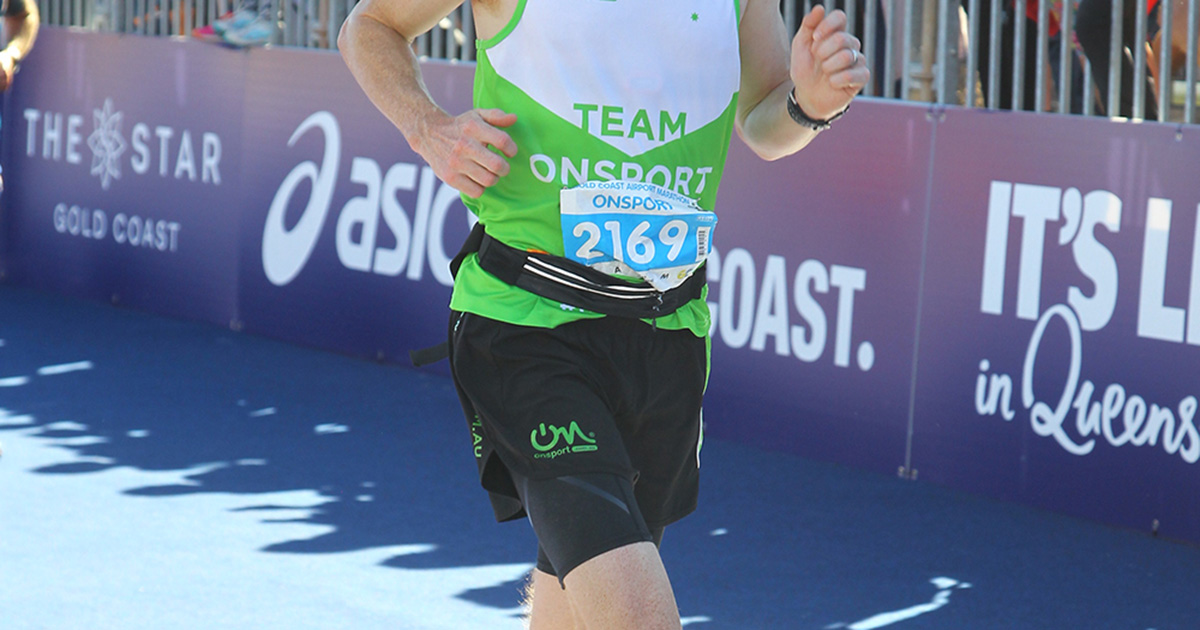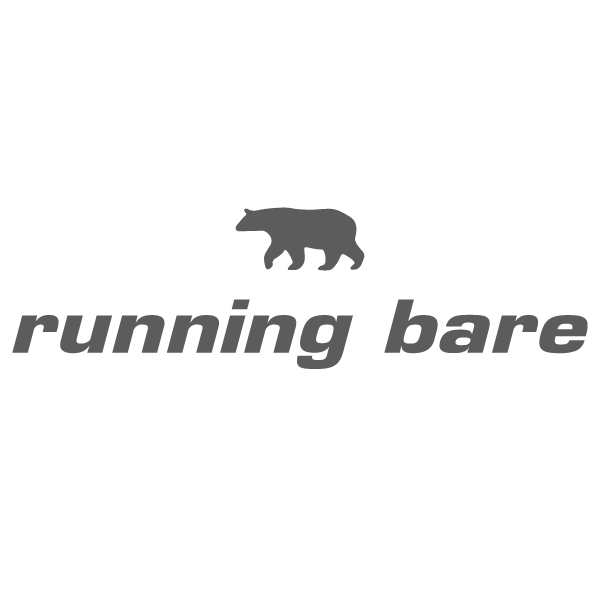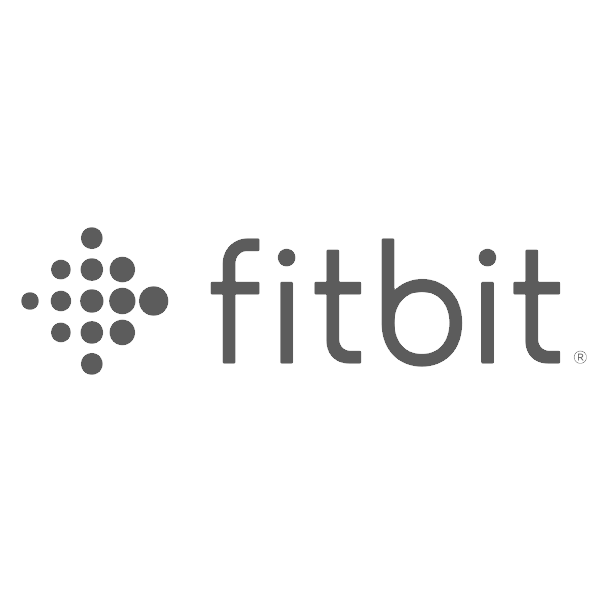Top 7 Marathon Running Tips For First Timers

In July 2017 I ran my first marathon, the Gold Coast Marathon. Crossing the finish line having run over 42km was an exhilarating and emotional experience. It was a long, hard 14 week training ‘campaign’ that started at the beginning of the year with my New Year’s resolution to run my first marathon. Unfortunately my marathon preparation and first marathon race day did not go to plan, as I hit the infamous ‘wall’ at around the 30km mark.
Out of my training and race day experience I have 7 key takeaways for how I would train for and run my second marathon and significantly improve on my time of 3:34. If you’re training for your first marathon (congrats if you are, it’s a fantastic, special experience!) then I hope these marathon training tips will assist you in running your first marathon as well as you possibly can.
1. Run more and longer distances than you think you need
The marathon distance is a LONG way to run. There’s no hiding from the 26 miles and it will call you out if you haven’t done enough training, that’s a guarantee! You cannot fake your way through a marathon like you can a 10k or even half marathon. The first and most important lesson from training for and running my first marathon is to train more consistently and run more volume (more kilometres). It may sound simply but my strong advice, from learning the hard way, is to run as much as you can before race day - when you think you’ve run enough, run more and then a little more.
Obviously tapering properly for the race is important and avoiding over-training is important so as to prevent an overuse injury, especially if you are returning to running or haven’t run regularly in the past, however, to understate it, hitting the wall at 30km was a hugely UNPLEASANT experience and caused a lot of suffering and mental battles over the remaining 12kms of my race. I never thought I’d see the day where I walked during a race and I unashamedly admit that I walked during my first marathon because there wasn’t a choice, I HAD TO walk for short periods in order to finish.
Throughout my marathon training I ran a total of 500 kms across 14 weeks (see graph below). Whilst I ran a very decent 39km in a single session towards the end of my training, ideally I would've had more long runs in the bank before race day. I completed just 9 long runs in my training. A number of scheduled marathon long runs were missed in my training schedule due to either my work/home schedule getting busy or occasionally getting sick - for instance, two weeks prior to the marathon I had a nasty cold that really knocked me off my feet and prevented me from training.

I highly recommend following an online marathon training program, such as the training plan provided by McMillan Running via Strava Premium (customisable by event type, number of times run per week etc), as it gives you a structure to follow to ensure you are running as effectively as possible building both speed and endurance, not just one or the other (or worse, just going out each day and running as hard as you can as I did many years ago).

A training program also helps to keep you motivated and in a way accountable for your training week. If you're running without a plan it's easy to skip a session and to not feel to many consequences, however, when you have a training plan, it's easier to feel like you missed a key training session and to try to make up for it the following week or later on in your training. Slowly build up your endurance and if you wish to achieve your goal time, your speed and you should be rewarded on race day.
2. Don’t go out too hard!
The saying 'it's a marathon not a sprint' means so much more after you've run a marathon. I ran WAY too hard (for my training level) out of the blocks, trying to stick to my desired overall time of between 3-3:15 and consequently I burnt my fuel (glycogen) early on in the race than I should've, fuel reserves that I needed for the second half of the race but tragically didn't have. The below image outlines my splits in first 20kms - silly. This is a psychological issue I need to overcome in future marathons, as despite telling myself my race strategy was to run a quicker second half of the race, I didn’t fully believe in the strategy and when I crossed the start/finish line, the crazy competitive streak in me took over and was telling me ‘go for it’ early in the race.
My second piece of advice therefore is to start the race, especially the first 5-10km, far slower than your goal marathon pace and progressively increase your speed throughout the race (aka negative splitting your race). This is easy to say in hindsight but difficult to do with the excitement surrounding the start of the race. I promise you though, going out quicker and harder than your lactate threshold and maintaining that quicker speed, even when you may feel OK, is a recipe for hitting the wall, as I learned.
3. Consume more carbohydrate and electrolyte than you think you need
Most people on the planet have heard of carbo-loading and know the importance carbohydrates and electrolytes play in successful marathon running, however, it’s so easy to get into a deficit scenario by not consuming enough during the race. I took my pre-race carbohydrate loading ‘program’ pretty seriously, eating a large amount of carbs in the 4-5 days leading up to the race and the 24 hours before the race consumed a significant amount of carbohydrate in the form of bananas, pasta, carbohydrate bars, oats etc.
I really jammed the carbs in prior to the race and on the morning of the race, to the point where I felt I was going to either burst or be sick - I couldn’t eat any more… However, during the race, particularly at the start of the race, as there was so much of a build up emotionally and so many carbs in the morning, some of which were sickly sweet-tasting, the thought of consuming more sickly sweet-tasting electrolyte or carbs in the first 5-10kms of the race nearly made me vomit in the first few kms! So, what did I do? I skipped the first planned gel intake and skipped the first few drink stations. No biggy right? Wrong. That was a BIG mistake and was to my significant detriment later in the race.
As the temperature rose throughout the race morning from 10 degrees at the start to closer to 22 degrees when I finished, my calves started to cramp up big time due to the lack of electrolyte and carbohydrate in my body. Before hitting the wall at the 30km mark, for more than the first half of the race, I ran into drink stations at the same pace that I was running the race, swiped at a cup and kept running. Once out of the drink station, I then continued to run at the same pace trying to drink from the paper cup, failing horribly, spilling more electrolyte over my face and chest than was going into my mouth. This meant that I was only consuming a fraction of the electrolyte that I should've been consuming.
I carried a drink bottle on my training runs, so I did think about the need to practice drink station consumption techniques, however, in hindsight, you’re running for so long, that I would suggest slowing right down going into the drink station, taking a small amount of time to properly consume the fluid to ensure most of it actually goes into the body and then picking the pace back up afterwards. Alternatively, you can carry or wear a hydration product such as a running drink bottle, hydration belt or hydration running vest. I can tell you from my experience of hitting the wall that your overall time will be lot quicker following this approach than if you consume poorly at the drink stations and cramp up later in the race as I experienced.
4. Warm up properly and remain calm
There was so much running through my mind pre-race that I didn't focus enough of my attention on warming up. My brother ran the half marathon which started an hour or so earlier than the full marathon I was running in, so I was at the starting line really earlier, however, for the first thirty minutes I focussed on getting my brother to the start line and cheering him on and then I took my time to continue to consume carbohydrate in the form of bananas, sipping sports drinks and a carbohydrate bar.
I was pretty tired from the lack of sleep the night before so my mind was all over the place, not really focused on anything, especially warming up. As such, I spent a minimal 10 minutes or so going for a light jog and a light stretch. I really should've limbered up more than this and as it took the body a km or two to fully warm up and get into gear.
5. Manage signs of pain early

During my 16 weeks+ of marathon training, I experienced muscle soreness unlike any I had before. However, I didn’t experience any particular acute pain throughout most of my training. Of course I felt the odd niggle in the hamstrings and glutes, the quads and occasionally the achilles in both legs. I tried to manage these signs of fatigue with a combination of rest, reducing speed session intensity and frequency and receiving a sports massage when the soreness escalated to the point where I was sore just jogging lightly.
Three weeks out from race day, I noticed towards the end of one of my long runs which included significant elevation gain, that my left knee was experiencing a sharp pain on the outer bone near my knee. I instantly identified it as ITB (or ITBS) as I experienced similar pain almost a decade ago when recommencing training after a long lay off. On subsequent shorter training runs the ITB pain did not flare up so I thought that it may have been a one off. However, I should've consulted a physiotherapist to provide me with an action plan for dealing with the pain should it occur during the race, as it did at the 9km mark. I was running along feeling pretty solid when suddenly the ITB pain surfaced again in the form of severe, sharp jabs to the one spot on my knee. I struggled up the smallest of inclines in pain every time my foot was extended and landed on the pavement. I tried to manage this pain by changing my foot strike or position to see if I could identify which type of foot strike lead to the least amount of pain, however, I was unable to find a solution, so I battled with this pain from the 9th km to the 42nd.
I'm not suggesting you run to the physio at the first sign you get of a niggle, because niggles can be self-manageable, however, when you have the level of pain that I felt that close to the marathon, I would suggest seeing someone for some strategies to try to deal with the pain. It may have been at that point there was little I could do to prevent or manage the pain, but I don't know and I would've know had I seen a physio.
6. Sleep more in the week leading up to the race
The night before the race was a mini-nightmare (pun intended) from a sleep perspective. I was excited and nervous about running my first marathon and it felt strange to get into bed so early (around 9pm), however, I knew I would need to wake at the ripe old hour of 4am to start my pre-race nutrition plan (which was basically jam in as many carbs as I could in the two hour window!). It’s almost a given that the night before the race I’m going to feel unsettled and probably get a pretty bad night’s sleep, especially with so many variables that can affect sleep when traveling (such as the noisy bar at the bottom of the hotel I was staying at on the Gold Coast), so to an extent this is fairly uncontrollable. What is more controllable is the sleep that I get during the week of the race. This is where I need to bank sleep and practice getting up earlier than sometimes I normally would by going to bed early and waking early to set up the sleep and waking pattern for race day.
7. Focus more on recovery
Having not trained for or run a full marathon, I was a little naive and relaxed when it came to my recovery, with regards to both nutrition and physical recovery. I found the recovery process the last thing I focused on as I figured I am young and I don’t need to do much for my body to recover itself. How wrong I was. I now understand that a proper recovery process is important when undertaking marathon training, as being more recovered between sessions allows you to run subsequent training sessions harder and with less pain or fatigue, reducing the possibility of overtraining and associated injuries. I would change my recovery program in the following ways:
1. Self massage with a foam roller and spiky ball far more often and for a longer duration - my key target areas are the muscles that support the achilles tendon that I use a spiky ball to massage and the infamous ITB that is smashed by the lying on my side and foam rolling it out, enduring a little pain at times for a lot of gain (and to avoid more pain down the track in the form of hip and especially knee pain due to the friction caused by the IT band rubbing over the bony outside part of my knee
2. Nutrition - generally I try to eat fairly healthily, trying to consume a broad spectrum of vegetables, lean meat and carbohydrates, however, when training for my first marathon, insufficient focus was placed on carbohydrate and protein, the nutritional foundations of recovery. I have replaced my previous post-workout whey protein concentration (WPC) with a more balanced mix of carbohydrate and protein in the ratio of 6 parts carbohydrate to 1 part protein. The product I prefer to use is Endura Optimizer. I’ve found this 6:1 carbohydrate:protein ratio to work better than consuming 40g+ protein only
3. Rest and compression - the program I undertook for my marathon training required that I train 6 days a week. In hindsight this was too demanding a training schedule for me as I hadn’t built up the fitness base or any regular distance in my legs and consequently, blindly following this training program led to a number of over-training injuries. My new training program provides an extra day’s recovery (running 5 days per week not 6) which I’m finding to be beneficial. The program alternates periods of training that are more demanding on the body with lighter training periods designed to be less taxing on the body to allow for further active recovery. I've also become accustomed to wearing 2XU compression during my run for injury prevention and maximising my training effort, as well as wearing after training for a few hours for recovery.
Summary
There are many more marathon running tips I could've provided, but these were the key lessons specifically arising out of my first marathon. We hope you found these tips useful. If you have any comments or questions please leave them below and if you have any other marathon training tips or advice for our readers, please leave them below!
A full race review can be found on Reddit.
Happy running!
// Andrew, Team Onsport





























































































